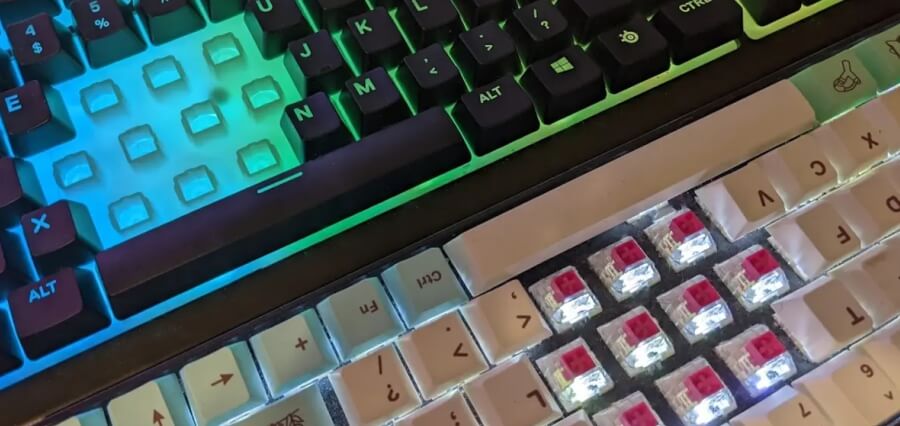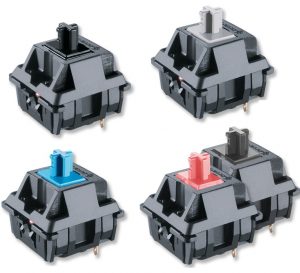The Role of a Membrane Switch in Modern Touch Interfaces and Controls
The Role of a Membrane Switch in Modern Touch Interfaces and Controls
Blog Article
Just How Membrane Layer Switches Over Contribute to the Longevity of Electronic Control Panels
Membrane layer switches play a vital duty in improving the resilience of digital control panels, mainly through their multi-layered building which supplies efficient protection versus environmental aspects such as dampness and dirt. The absence of moving components considerably reduces the possibility of mechanical failures, making membrane layer switches ideal for demanding applications.
Meaning of Membrane Switches

Membrane layer buttons are made to be thin and lightweight, making them suitable for applications where space is restricted. They can be made in different shapes, sizes, and shades, supplying adaptability in style that fulfills aesthetic and useful needs. In addition, membrane switches can include different innovations, such as tactile responses and LED indicators, improving user experience.
As a result of their construction, membrane switches are commonly resistant to dirt, dampness, and general wear, contributing to their sturdiness popular atmospheres. Their seamless style not just helps with easy cleaning yet additionally minimizes the danger of mechanical failure, making them a preferred choice for producers looking for trustworthy interface in their digital control panels.
Defense Versus Environmental Elements
The layout of membrane switches over inherently gives a degree of security against numerous ecological aspects, which is important for keeping capability in difficult conditions - Membrane Switch. These switches are typically built with layers of adaptable products that shield interior parts from wetness, dirt, and impurities. By enveloping the wiring, membrane changes reduce the threat of brief circuits and rust, which can dramatically impair efficiency
Furthermore, using durable adhesives and sealers throughout production improves their resistance to ecological difficulties. Membrane layer switches can sustain direct exposure to chemicals and solvents, making them appropriate for sectors such as food processing and medical care, where hygiene and cleanliness are extremely important. Their smooth surface style likewise prevents the buildup of dust and germs, facilitating easier cleaning and maintenance.
Temperature changes are an additional environmental problem, and membrane layer switches are engineered to operate effectively throughout a vast array of temperature levels (Membrane Switch). This versatility ensures that control panels remain operational in various setups, from commercial environments to customer electronics
Influence On Individual Interaction
Individual communication with digital control panels is dramatically influenced by the layout and functionality of membrane layer buttons. These switches give a tactile user interface that enhances the general user experience, permitting for user-friendly navigation and control. Their receptive nature ensures that customers obtain prompt responses upon activation, which is important for jobs needing accuracy and effectiveness.
Additionally, the smooth surface of membrane switches over promotes simple cleaning and upkeep, promoting customer self-confidence in the integrity of the interface. This tidiness is specifically crucial in environments where hygiene is extremely important, such as clinical or food handling setups. Additionally, the small and light-weight style of membrane layer switches adds to the visual charm of control board, urging individual interaction through a modern-day and sleek appearance.
In addition, the integration of aesthetic components, such as printed symbols and backlighting, assists customers swiftly recognize functions, reducing the discovering contour related to new devices. Consequently, customers can operate tools better, resulting in enhanced efficiency and satisfaction. In summary, membrane layer switches play an essential role in enhancing customer communication by integrating performance, looks, and convenience of usage, ultimately causing boosted operational effectiveness.
Layout Versatility and Personalization
Style versatility and personalization are important facets of membrane layer buttons, enabling manufacturers to customize electronic control panels to specific applications and customer demands. This versatility permits the assimilation of various layout components, such as shades, graphics, and appearances, which can boost the visual allure and individual involvement of the control board.
Membrane buttons can be customized in shapes and size, suiting a large range of gadgets and applications, from commercial equipment to consumer electronics. This flexibility guarantees that makers can create intuitive user interfaces that straighten with customer expectations and operational needs. Furthermore, the capacity to incorporate one-of-a-kind attributes such as backlighting or tactile responses additionally enhances usability, enabling a much more imp source interactive experience.
Moreover, the manufacturing process for membrane layer switches over sustains the quick prototyping of layouts, making it possible for makers to iterate and improve their ideas quickly. This capability not only increases the development timeline however likewise guarantees that the end product fulfills specific useful and visual standards.

Cost-Effectiveness and Durability
Cost-effectiveness and longevity are substantial benefits of membrane layer switches, making them an attractive choice for producers and end-users alike. These switches are normally much less pricey to create than typical mechanical switches, primarily as a result of their simplified manufacturing procedures and the lowered number of parts called for. This price benefit prolongs not only to preliminary production yet also to long-lasting operational costs, as membrane buttons often need much less maintenance and have a reduced failing price.
Furthermore, the long life of membrane layer changes YOURURL.com contributes to their total worth. Built from sturdy materials, they are resistant to ecological factors such as wetness, dust, and chemicals, which can result in premature wear in other switch types. The absence of relocating parts lessens mechanical failing, enabling membrane switches over to preserve capability over prolonged periods.
This toughness is particularly helpful in applications needing regular performance under demanding conditions, such as clinical devices and commercial equipment. Inevitably, the combination of cost-effectiveness and longevity makes membrane changes an economically sensible choice for producers, offering trustworthy remedies that withstand the test of time while maximizing monetary considerations.
Final Thought
In final thought, membrane switches considerably enhance the sturdiness of digital control see panels with their durable building and protective attributes - Membrane Switch. In general, membrane layer changes stand for a trustworthy and economical selection for enhancing the long life and performance of electronic control systems.
Report this page